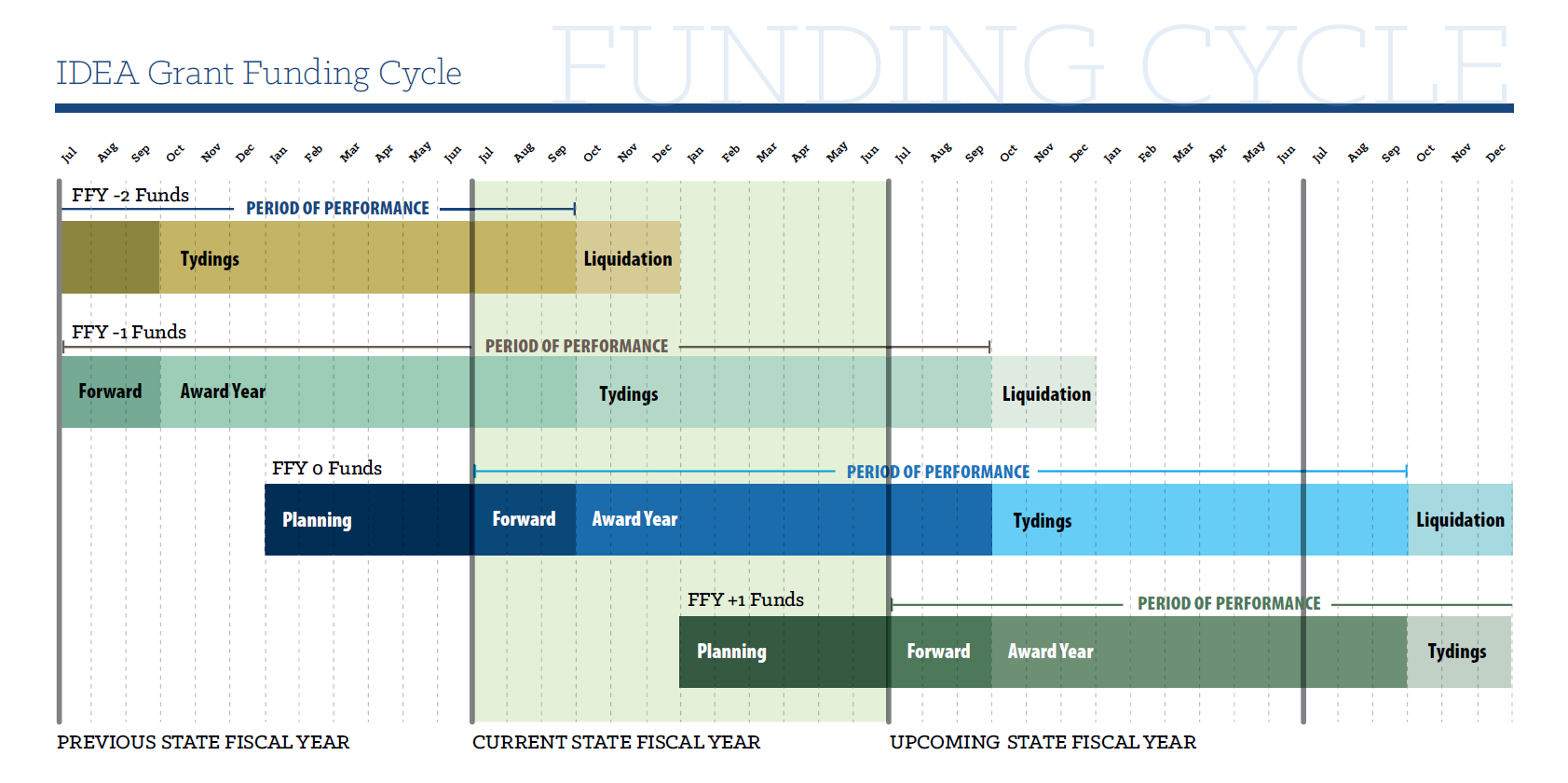IDEA Part B
Annually, Oregon receives grants under Sections 611 and 619 of the IDEA. Most of these grants are earmarked for Local Education Agencies (LEA). In Oregon, these funds are first allocated, then distributed to eligible LEAs over the course of the fiscal year in which the grants are awarded to Oregon. Below, please find a high-level overview of the process.
Allocation Phase
IDEA Part B funds are allocated to Local Education Agencies (LEAs) based on three factors:
- A
BASE amount is allocated based on 75% of Federal Fiscal Year (FFY) 1999's federal grant for minimum flow-through required by the IDEA;
- 85% of remaining funds are allocated on the basis of relative
POPULATION of all children aged 3 through 21. This is the previous year's October Enrollment of Public and Private Schools (final October Student Enrollment Report submitted to the ODE); and
- 15% of remaining funds are allocated based on
POVERTY in which the previous year's December release of the
Small Area Income and Poverty Estimates (SAIPE) are used.
The Base, Population, and Poverty amounts are combined to provide each
LEA's gross allocation amount.
Distribution Phase
The ODE then distributes the gross funds based on the
LEA's number of children receiving special education services by serving agency. Serving agencies can be: the LEA or District directly, a Regional Program, the Oregon School for the Deaf (OSD), a Long Term Care and Treatment center (LTCT), a Hospital program, or the ECSE program.
Section 611 is paid in two to three installments. Typically one in late July and a second one in late October. Section 619 is typically paid once in late July. On rare occasion, the ODE may be required to adjust funding that has already been provided.
Local Education Agency (LEA) Allocation Tables
Amounts provided may change as new information is made available. Allocations are released as estimates prior to the beginning of the next fiscal year in April, then a preliminary release showing the best information available in July, then a final release in April of the following year with updated information from the most recent child count data.
Availability of Funds
LEAs are notified of funding availability through the Electronic Grant Management System (EGMS) via individual grant award notifications. Federal funding of IDEA has an initial period of 15 months beginning July 1 and ending September 30, 15 months later. The Tydings Amendment allows LEAs to continue using funds provided in the funding period for an additional 12 months. This brings the total available time to obligate and spend to 27 months.
Please see the
Understanding the IDEA Grant Funding Cycle and Different Fiscal Years document produced by the Center for IDEA Fiscal Reporting (CIFR) for additional details. Below is a graphic from that document which shows an idealized timeline of each grant.
 Note how, between July 1 and September 30, there is the possibility of three separate grants available. Grant recipients are expected to spend funds on what is called a "First In, First Out" method. This means that recipients must use their oldest funds first.
Note how, between July 1 and September 30, there is the possibility of three separate grants available. Grant recipients are expected to spend funds on what is called a "First In, First Out" method. This means that recipients must use their oldest funds first.